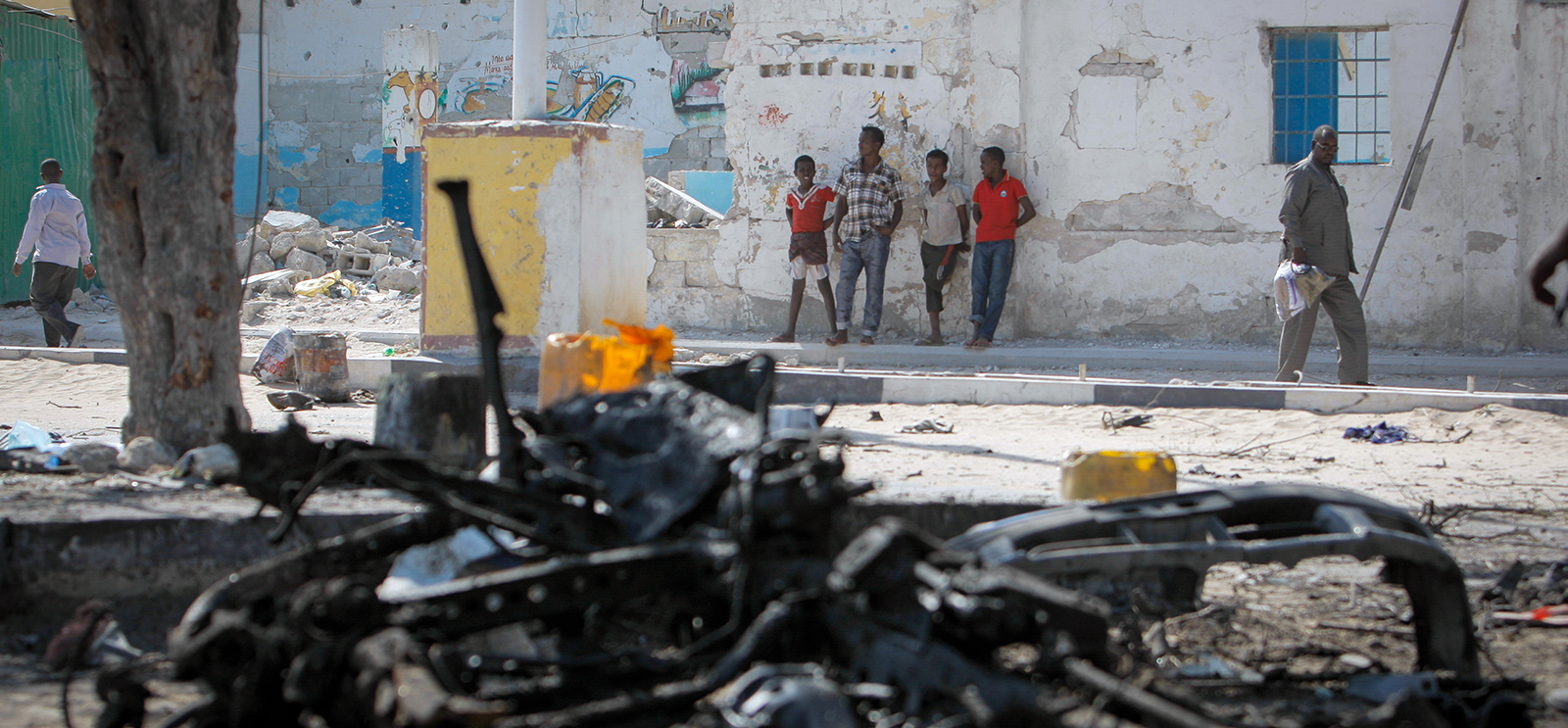
Young Somalis look on near the wreckage of a car bomb after a double suicide attack by al-Qaida–affiliated extremist group al-Shabaab killed 18 people and injured dozens more at a popular Mogadishu restaurant in the Somali capital on September 7, 2013. (Photo courtesy AMISOM Public Information)
A by-the-numbers analysis of suicide terrorism.
Robert Pape describes suicide attacks as “the lung cancer of terrorism.” Deadly and difficult to defend against, they kill 10 times as many people, on average, as non-suicide attacks.
Overall, terrorism has been decreasing since the 1980s, but if you look at suicide terrorism, “you understand that we should have been much more worried about these events, … because the trend has been going up,” says Pape, professor in political science and director of the Chicago Project on Security and Terrorism (CPOST).
Pape and a team of CPOST students gather their data from media coverage and from reports by the terrorist groups themselves. In the past several years, they’ve issued annual indexes of suicide attacks. (The graph above is taken from the 2015 Suicide Attack Index, released this April.)
Not only has the number of attacks been increasing since 2012, the number of large-scale attacks, like those in Paris and Nigeria, reached a 12-year high in 2015, according to the index.
Pape argues suicide terrorism is a direct result of military intervention. In particular, his data show that suicide attacks are often a response to military campaigns on territory prized by the terrorist groups; frequently, the attacks occur when the occupying military force is beginning to loosen its territorial control.
Because terrorist groups lack the advanced weapons and equipment of traditional armies, suicide attacks are the most effective tactic they have at their disposal—Pape estimates that roughly a third of suicide attacks allow groups to take and hold territory. “That’s pretty important for these militant non-state actors who don’t have any alternatives,” he says.
The annual suicide attack indexes help Pape and his team identify emerging trends in suicide terrorism. The 2015 index revealed a significant and unexpected uptick in suicide attacks by women in Nigeria, a phenomenon Pape and his students are investigating this summer.
The data Pape has collected challenges the perception that suicide terrorism is a tactic used exclusively by radical Islamic groups. In fact, it was the Sri Lankan Tamil Tigers, a secular group, that pioneered the modern phenomenon of suicide terrorism as a war tactic. From 1980 to 2003, Pape points out, they launched more suicide attacks than any other group, including Hamas and Palestinian Islamic Jihad.
The belief that only Muslim groups engage in suicide terrorism “is becoming a self-fulfilling prophecy,” Pape argues. “The more we’re putting different Muslim populations under heavy military intervention stress, the more we’re seeing suicide terrorism.” Pape believes the American invasions of Iraq and Afghanistan triggered the deadly wave of suicide attacks in the Middle East and the West that continues today.
To deter potential terrorists, Pape argues the United States should limit military intervention and instead focus on improving domestic security. He also hopes the United States will support stable governance structures that benefit the local people in the Middle East, not just American interests. This, he thinks, will prevent the rise of new terrorist groups and recurrence of old ones. “The study of suicide terrorism … tells us that the political solutions are the true lasting solutions,” he says.
Updated 08.31.2016: The name of the Islamic Jihad organization was edited to correct ambiguity.

